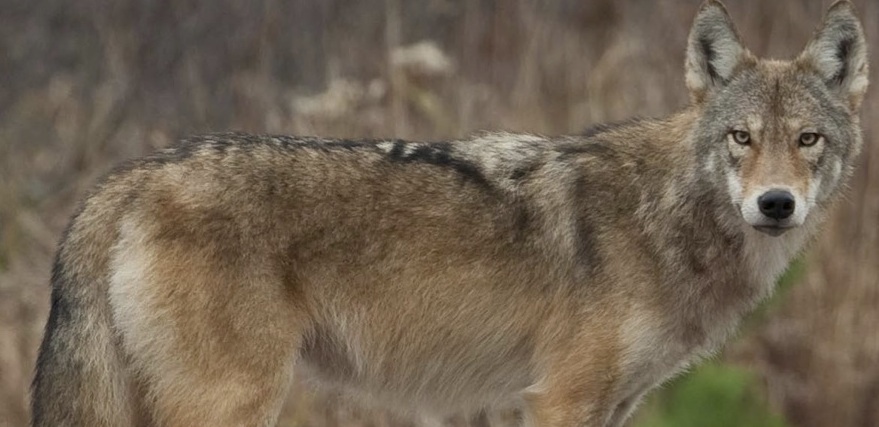In my article on coyotes last month, I mentioned a difference between grey wolves (Canis lupus) and eastern wolves (Canis lycaon) and promised a follow-up explanation. Ok, here goes…
When most folks think of wolves, they’re thinking of the grey wolf – Canis lupus:
that ubiquitous look that we all know from movies, documentaries and other media. The gray wolf is a large animal – largest of the North American canines – averaging about 90 – 130 lbs. and lives (or lived) in the central and western part of North America. Up until about 10 or 15 years ago, it was assumed that this species of wolf was far more widely distributed across the continent (once upon a time) than now believed.
Enter the eastern wolf – Canis lycaon:
The eastern wolf is the species that lived up and down the eastern seaboard of North America prior to European colonization. Smaller than the grey wolf (they range roughly from 70 – 90 lbs.) the eastern wolf is actually more closely related genetically to the coyote (Canis latrans) than the gray wolf. With the extirpation of wolves from the lower 48 states, the eastern wolf is now only found in southeastern Canada. It is this species that biologists believe coyotes interbred with when they moved east during the early part of the 20th century, helping to create what we now call the eastern coyote.
The fate of the eastern wolf and the eastern coyote is still yet to be determined. Will the eastern coyote be determined to be a sub-species of coyote (Canis latrans)? Or will it eventually be classified as its own species? In their current form, eastern coyotes are not likely to be considered a sub-species of the eastern wolf as their coyote-to-wolf DNA ratio is pretty high. However, in southeastern Canada where both species reside, interbreeding continues between eastern coyotes and eastern wolves. It’s possible that in the next several decades we’ll have an animal here that is neither truly wolf or truly coyote. I think it is yet to be determined what animal(s) will take the role of top-level predator in northeastern North America. We’re currently watching evolution in process as these animals try to adapt to the human-dominated landscapes around them, and time will tell who – or what – will prevail.




I had no idea there were such differences. Makes sense that the gray wolf is more recognizable from the movies. We have a lot of coyotes where I lived in the country. I always wondered about the difference. Interesting about the possible new species. I’m curious to know how it turns out. Thank-you for sharing. 🙂
Hi Angelia!
This is all still pretty new stuff regarding wolves – it was news to me also when I started doing research for a presentation I gave this fall. I don’t know what you’ve observed about the coyotes where you live, but we’ve started seeing some really big ones by us. It’s definitely interesting to see coyote evolution in process!
I’m sure I saw the eastern wolf in my yard about 3 1/2 weeks ago. I convinced myself at first that it was a coyote (hear them all the time…or what I’ve been told were coyote) since that’s what I’ve been told lives here.
I’m in Johnson City, NY and have notified DEC and Wildlife Conservation in my area.
Oh…it seems to, physically, have more of the attributes of a wolf…too big and too muscular to be coyote-ish…made up word…:)
So interesting – I hope you can get a picture if it ever shows up in your yard again! Eastern wolves (and/or eastern wolf/eastern coyote hybrids??) are definitely making their way down from Canada. I think it’s only a matter of time before we have an even larger canine living here in the northeast. I’m hoping it’s sooner, but I’m sure many people aren’t! It will be interesting to see how eastern coyotes deal with the only slightly larger canine (compared to the Gray Wolf) that might migrate down here. Will they see them as competition, or fold them into their social structures?